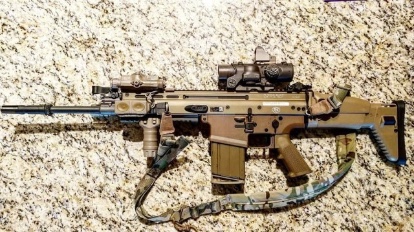
If you aren’t current in the latest firearm news, there are two new regulations that were proposed and likely to be adopted this year. I’m going to (to the best of my understanding) cover what I’ve gathered on both- splitting it up over two different posts dedicated to each. PLEASE comment and let me know what you think or if you understand it differently. 80% lower receivers and marking firearms is the post for today.
Ghost Guns and You or How Criminals Ruin it For Everyone
First some stats from the ATF which is behind the push for the change to the regulations.
From January 1, 2016, through March 4, 2021, ATF could only complete traces of suspected PMFs recovered by law enforcement to an individual purchaser in approximately 151 out of 23,946 attempts, generally by tracing a serial number engraved on a handgun slide, barrel, or other firearm part not currently defined as a frame or receiver, but recorded by licensees in the absence of other markings.
You might be saying to yourself “Self? How does this affect us? We aren’t criminals or involved in criminal activity!” Which, if you are, then read on.
Basically, criminals are exploiting the current loophole that allows law abiding people the opportunity to purchase 80% lower receivers directly from dealers or the origin manufacturers. FFL manufacturing dealers can sell them but if they are used to make a complete firearm or are completed to 100% need to be marked in accordance with current regulations. Privately Made Firearms (PMF) are not held to the regulation.
Their intent is made clear in the newest edition of the Federal Register found here (pg 5110)
The intent of this rulemaking is to consider technological developments and modern terminology in the firearms industry, and to enhance public safety by helping to stem the proliferation of unmarked, privately made firearms that have increasingly been recovered at crime scenes.
Bottom line is that people are using these “Ghost Guns” in crimes or have them in general with no way to trace them to an FFL that provided them, a “straw man” that purchased them, or a theft where they were obtained. Now, the ATF and Department of Justice are trying to combat this with this new regulation.
The ATF currently has no requirement for these devices to be marked by private individuals and they are not illegal as found on their website:
Receiver blanks that do not meet the definition of a “firearm” are not subject to regulation under the Gun Control Act (GCA). ATF has long held that items such as receiver blanks, “castings” or “machined bodies” in which the fire-control cavity area is completely solid and un-machined have not reached the “stage of manufacture” which would result in the classification of a firearm according to the GCA.
Confused yet?
In order for the ATF and DOJ to proceed with the regulations they have also had to get definitions redefined and approved. This is mostly due to the fact that “receiver blanks” are not defined as firearms the same way completed firearms or other serialized parts are. This regulation would have the manufacturers of the “receiver blanks” mark the 80% complete components like a completed firearm. per the Federal Register filing:
A firearm, including a frame or receiver, assembled or otherwise produced by a non-licensee without any markings by a licensee at the time of production or importation is defined as a “privately made firearm (PMF)” in the proposed rule. Under the proposed rule, FFLs would be required to mark PMFs within 7 days of the firearm being received by a licensee, or before disposition, whichever first occurs. Licensees would have 60 days to mark PMFs already in inventory after a final rule becomes effective. FFLs would have the option to mark their existing PMFs themselves. Both FFLs and non-FFLs would have the option to contract with an FFL, such as a gunsmith, for this purpose, dispose of them, or send them to ATF or another law enforcement agency for disposal.
Again, most of this applies to the incomplete lower receivers and frames that can be purchased without having to go through an FFL to transfer the firearm to the owner (or other FFL.) It seems like they are trying to leave all other definitions alone and maintain the current marking standards.
One important goal of this rule is to ensure that it does not affect existing ATF classifications of firearms that specify a single component as the frame or receiver.
ATF believes that the majority of the industry currently complies with these requirements, so the cost would be minimal. While the new definitions would mostly affect new designs or configurations of firearms, manufacturers would still be able to receive a determination or a variance on the design from ATF.
TL;DR
In a nutshell, the DOJ and ATF are trying to curb the use of non-marked firearms in crimes and be able to track firearms in a more consistent fashion. The new regulations is intended to redefine some components but retain the markings standards that have already been in place.


